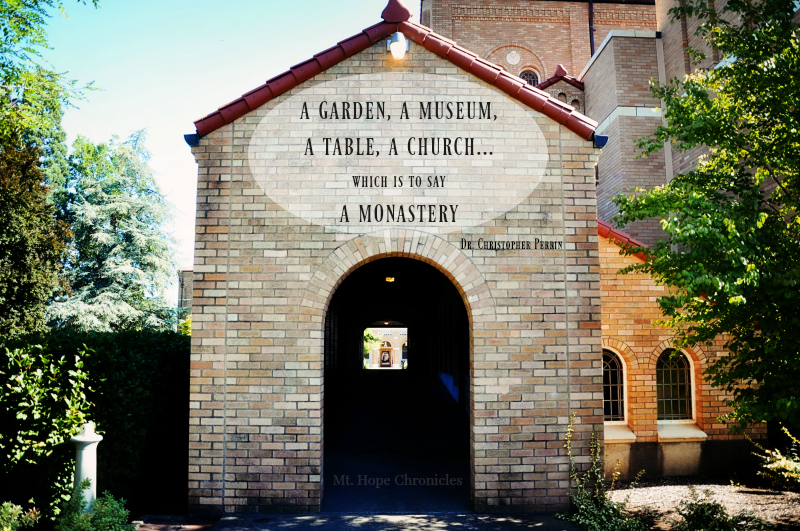
[Scroll down if you want to skip this conversation and just see a few more pictures of our trip to Mount Angel Abbey, our local Benedictine Monastery. CC Friends, sing it with me: “Benedict and Monasticism…” Can you stop there?]
.
Metaphor is POWERFUL. It ignites the imagination. It allows us to form images, to “picture to oneself.” It allows us to hold an image in our heads that is simple and concrete but so profound and nuanced that we can contemplate its meaning for a long period of time.
Metaphors are VIVID.
One of the ways in which we create metaphors is to ask comparison questions.
How is _______ like _________.
Comparison is one of the 5 Common Topics. You do not have to compare two seemingly similar things. Metaphor, particularly, is the comparison of two unlike things. A pen is like a pencil is not a metaphor. A pen is like a sword is a metaphor.
One of my favorite experiences this summer was at the Homeschooling from Rest Retreat when Jennifer Dow led us in a discussion comparing The Nightingale to Classical education.
.
Recently Andrew Kern asked "If the model for a school isn't the home, what is it?" He's known for his ambiguous, open-ended questions, but I had been pondering this a bit after watching The Liturgical Classroom and Virtue Formation with Jenny Rallens, so I timidly answered "a monastery?" Dr. Christopher Perrin chimed in a bit later with "A garden, museum, table and church--which is to say a monastery." This is a much fuller and more beautiful (and certainly less timid) answer. (And he tagged me in his answer, so I know I've "arrived." [wink])
I've been avoiding organizing and planning for the coming school year (paralyzed, really), but those four words have been running though my mind and heart: a garden, museum, table, and church. What do these mean? How would you model a school after these four elements? How would they inform your day or the content of your lessons? Are they physical realities or metaphorical? Both? How?
As these questions were swirling in my brain, I asked them on my Facebook page. Many friends joined in the discussion, and I wanted to share a bit of it here so that I could return to it again and again. It’s a long discussion, and I’ve only shared a portion here, but I hope it speaks into your life as you learn and teach your children (whether you homeschool or not).
[After this Facebook conversation I attended a Lost Tools of Writing workshop with Matt Bianco. He began our day by asking each attendee to share a metaphor for education. There was no time for explanation or discussion, but just reading all the metaphors on the board (more than thirty) was a powerful beginning to our day. We were able to make our own images and thoughts from the words. Journey, garden, window, feast. Climbing a mountain.]
.
One of the questions that came up in discussion is whether the home is a better model for a school and whether a monastery is modeled after a home.
I realized that the reason “a monastery” feeds my imagination in ways that “home” does not is that it is outside of my own reality.
For me, the idea of home is maybe too close to home—it’s more difficult for me to be metaphorical and imaginative about something that is so much a part of my every waking moment that I can't see it from the outside. Harder to make a model out of home when I'm not currently "doing home" in the way that I should.
I do struggle with my own disobedience and the messiness of ordinary life. I feel like I need an image in my head to inspire and encourage me despite my failings. When I picture a home, it's either my home with its failings or a home that is not my home. When I picture a garden, a table, a museum, a church in the context of a monastery, they are not my home but can be applied to my home. It is a vivid metaphor for me.
My friend questioned whether those things are metaphors or real things.
I think they are both metaphorical and physical realities. The metaphorical meaning of garden might be a right relationship with all of creation, but certainly we could also have a physical garden at our own home and that may be the best way to practice interacting with nature rightly.
Sara Masarik:
I think that the metaphors are correct because when the esoteric or imaginative value is applied properly, we get a physical result that resembles the original idea.
Say a garden, for example. When I am taking care of my garden, I am doing physical work with living organisms. I am stewarding all of the life that is in my care. That is a physical act of obedience for a spiritual or metaphysical principle. So part of why I garden, because I do, is because that physical work puts me in touch with the metaphysical truth, in both physical and spiritual ways.
I guess what I'm trying to say is that it is a spiral. By physically caring for the garden, I am honing the spiritual principle which then further enables me to be a better caretaker of the physical obligations.
What I am not communicating effectively is that I loved it when he mentioned monastery because I think that's what monasteries do. They seek to pair the physical realities with the metaphysical realities in a way that is deeply obedient.
Me:
I think you just hit the nail on the head, Sara Masarik. A monastery takes the physical model and realities of home and connects them to the metaphysical realities. In that way, I think a monastery is a perfect model for a school (particularly a classical school) with a student moving from the concrete to the abstract, his studies culminating in philosophy and theology.
Sara Masarik:
Yes! That! A monastery is a garden. And a home. And a school. And a hospital. But all for the soul as well as the body. A monastery strives to serve with feet on earth and hearts and heads in heaven. And that, I think, is what our homes can be as well.
Jennifer Bascom:
I've noticed in my faith that the monasteries seem to represent a place between Heaven and Earth. The monks and nuns are like intercessors, praying all the time. They do some light work to keep things going but their main focus is prayer. In a home we can imitate that ideal by praying the hours and everyone pitching in to make the work light on everyone, and we can follow the same calendar and fasting/feasting rhythm but there will be more of a focus on worldly things like working outside the home and activities that accompany family life. The home is a perfect place to imitate some of the aspects of a monastery for peaceful godly living and a perfect place for school and learning I think.
Stacy LaPointe:
I don't think of a monastery as involving light work. Maybe I'm wrong, but I see it as very much about the discipline of hard work in the important aspects of life—in personal habits and labor, in relationships and seeking godly ways to be with your fellow community members, and in spiritual study and prayer. That is exactly like a family, or it can be. I like the idea of imagining it in that setting too because it helps me to abstract it from my very messy home monastery.
Jessi Caca:
Our Home: A garden, museum, table and church.
I feel comfortable leaving school out completely with those five words connected. Home, garden, museum, table, church. That's what we're doing. We're not homeschooling, we're lifeliving. And what is that? "A garden, museum, table and church."I admit I'd not naturally have ever come to the idea of museum, had I thought about this for my whole life, but I do see it fits. Or I want it to fit. We are concerned with treasuring the best of civilization and curating the beautiful, true, and good. That's museuming.
Mindy Pickens:
Rudy and I are discussing this in the car on our way to star watching. He says he thinks garden, museum, table, and church make him think of categories of learning: learn with your hands, from labor and observation, nurturing and growth in a garden; Learn from the past, and particularly beautiful things from the past as in a museum; learn from each other, from community and relationship being nourished at a table; and learn from God, from sacred history and tradition and scripture as in a church.
Tracy Evans:
The garden...Creation that points to a creator. The table....fellowship, communion. A museum...history..standing on the shoulders of those who came before us, traditions. The Church..living the liturgy in our homes.
Danielle Cyrus:
[Regarding resistance] And then I think, creating the vision amongst my little people (or students in a school) maybe starts with these images? Invitation to the table; invitation into the garden to cultivate beauty and order; invitation into worship; invitation to look into the past?
Lynn Wilcox:
A monastery is PERFECT, just as a home from a previous era, as both were expected to be self-sufficient from income, to food, to education, to worship, etc.
Joellen Armstrong:
Surrounding the kids with beauty from nature, giving them guidance to the Father, giving them good things for life (table - food, stories, knowledge rooted in Truth, friendship), and being, & providing for them, spiritual mentorship...
Holly Karstens:
Cultivate, contemplate, nourish and glorify. Cultivate wisdom, contemplate beauty, nourish the soul and glorify God through it all.
Me:
Charlotte Mason says that there are three branches of knowledge: knowledge of man, creation, and God. Philosophy is split into three branches: moral, natural, and divine. Maybe a museum, a garden, a church correspond respectively. And a table represents community, communion, and celebration. All of these are practiced in obedience and worship.
Stacy LaPointe:
“In my literature classes we look at books through these philosophical lenses here--man versus self, man versus society, and man versus God.”
Rebecca McAllister:
“If school is a garden, a museum, a table and a church, then learning is to grow, to observe, to partake and to worship. How often do we neglect one or more of those components when attempting to teach?”
Rachel Goodman:
We often we find great truth in what *isn't* as well as what *is*. So...wee brainstorm...what does a monastery NOT have? I think the similarity is a good start to begin intentionally adding those things to our home and home education but I'm thoughtful about what intentionally needs to go.
.
:: On the word "museum" and how it relates to a "musical" education (The Liberal Arts Tradition, Beauty for Truth's Sake...):
In TLAT it says "The musical (coming from the same root word as "museum") education was an education in wonder. It formed the heart and the moral imagination of the youth... They taught passions more than skills and content. They sowed the seeds which would grow into a lifelong love of learning." "It is a total education including the heart—the memory and passions and imagination" and it is "an education in wonder through engagement with reality as a delightful living museum—engagement with...the songs, stories, and art of human culture."
The word museum comes from the "muses," right? And the muses deal with human endeavor/creativity. This video names 9 muses: history, poetry, epic poetry, astronomy, song, dance, tragedy, comedy, history, and hymns.
:: Imagery of a table by Marc Hays [I adore this one! Click on the link and read it all.]:
Imagine a table lacking no good thing: beautiful in its own right.
But man shall not live by bread alone. As indispensable as physical nourishment is, we need more. Our appetites yearn for more than meat and drink, for more than bread and cheese. Our natures yearn for knowledge and understanding, for something to learn and something to say.
:: Abbots + Mothers by Korney Garrison @ One Deep Drawer
In his Rule, St Benedict says that the one who is abbot of the monastery must listen with the ears of the heart.
:: Stratford Caldecott has a few quotes that may apply here.
“At the heart of any culture worthy of the name is not work but leisure, schole in Greek, a word that lies at the root of the English word ‘school.’ At its highest, leisure is contemplation. It is an activity that is its own justification, the pure expression of what it is to be human. It is what we do. The ‘purpose’ of the quadrivium was to prepare us to contemplate God in an ordered fashion, to take delight in the source of all truth, beauty, and goodness, while the purpose of the trivium was to prepare us for the quadrivium. The ‘purpose’ of the Liberal Arts is therefore to purify the soul, to discipline the attention so that it becomes capable of devotion to God; that is, prayer.”
"Liturgy therefore starts with remembrance. We do not make ourselves from nothing. To be here at all is a gift... The liturgy...is the ultimate school of thanks. In the circle of giving, receiving, and being given, the one divine essence is revealed as an eternal threefold liturgy of love, prayer, and praise. When we come to Mass--or to the nearest equivalent of that liturgy our faith permits--we should be able to experience a sense that here, at last, all the threads of our education are being brought together. If we don't, something is wrong with our education or our liturgy. Science and art, mathematics and ethics, history and psychology, the worlds of nature and the spirit, are all present in a liturgy that gives them a home and a meaning."
“Education begins in the Trinity. Praise (of beauty), service (of goodness), and contemplation (of truth) are essential to the full expression of our humanity. The cosmos is liturgical by its very nature.”
On my book stack
The Quotidian Mysteries: Laundry, Liturgy and "Women's Work"
Wisdom from the Monastery: The Rule of St. Benedict for Everyday Life
Picture Books
The Holy Twins: Benedict and Scholastica
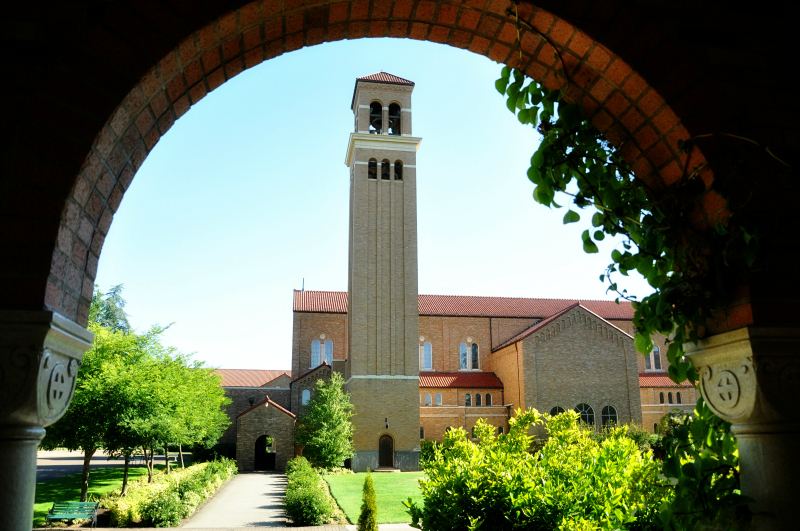
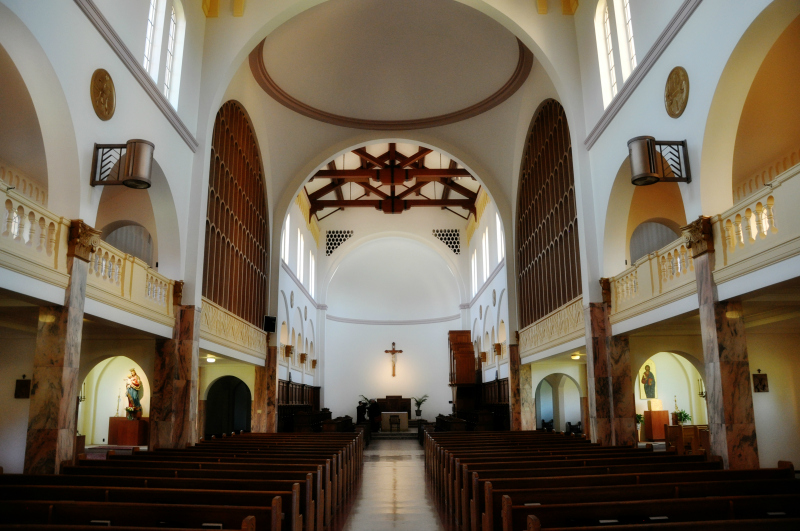
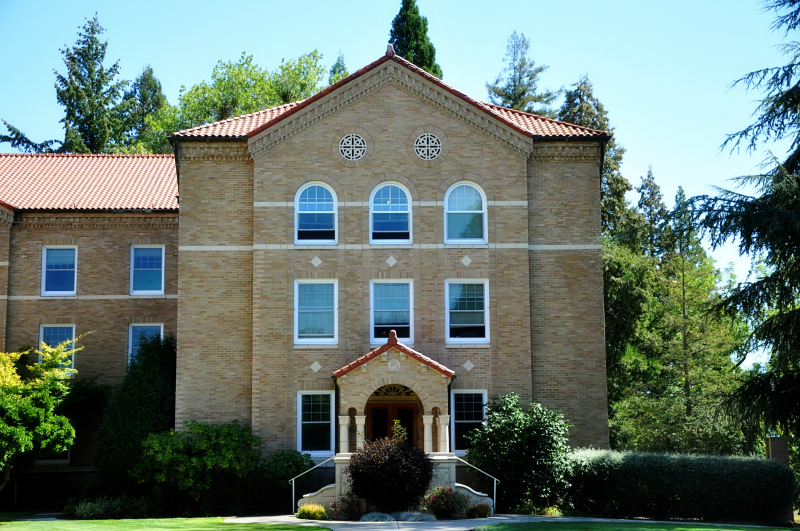
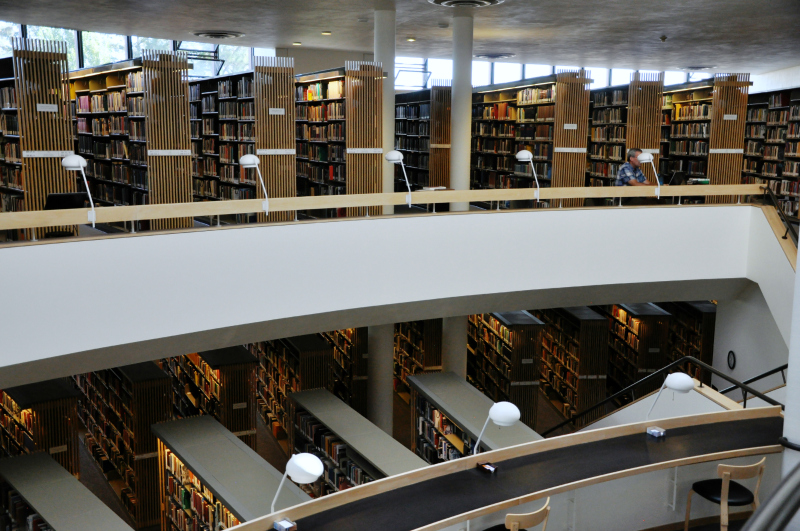
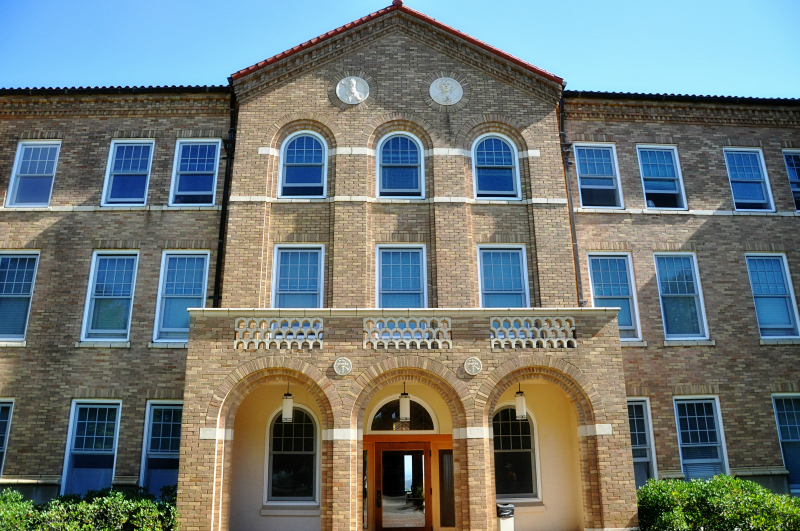
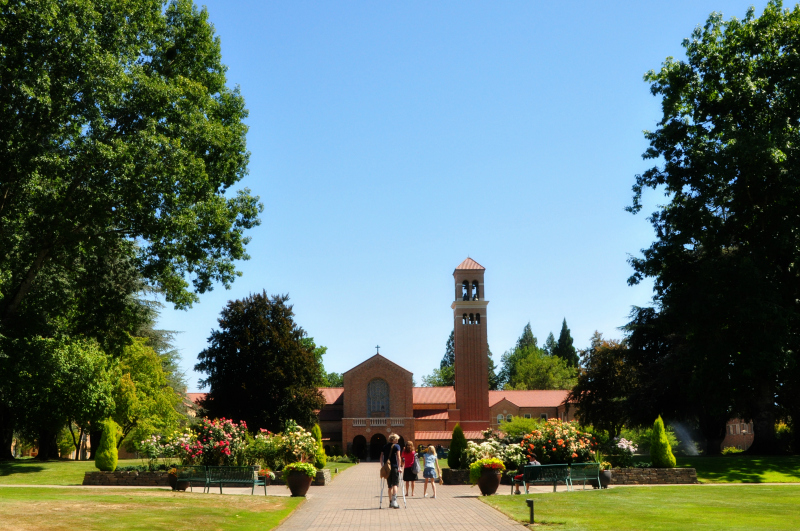
On my Instagram page, you can hear a short recording of the bells ringing for midday prayer and the monks chanting the midday prayer.

Heidi,
ReplyDeleteI have been reading your blog for awhile, but am not generally a commenting type! However, these four things connect so nicely with ideas I have been thinking on, that I thought I would share.
Cindy Rollins spoke on the topic of a teacher as a rememberer on a CiRCE podcast. She said that we are to help our students remember: the past, creation, poetry and God.
The day after hearing this podcast, I was reading a chapter in Prayer for Beginners by Peter Kreeft and he gave four places that we hear God's voice. Kreeft said God speaks through his providential directing of our lives and in the lessons of human history, in nature - which is his art, in his inspired Word and through the still small voice of our conscience - "God's interior prophet".
So....garden {creation - where we see God's art}, museum {history - where we see God's providence}, table {poetry - language and God's written Word -perhaps relationship and community with others is where the table idea could fit in in here?}, church {worship and our interior spiritual life, and again of course, community}. All places we hear the voice of God.
I do love the way that the metaphor of a monastery is removed enough from my home that I can think on it differently. Of course metaphors are never quite so one-to-one as I just made all of that and certainly all four of those things are not airtight compartments. In fact, from the garden comes the food, which is prepared to eat around a table. So much to think on. Thanks for all you share.
Erin
I loved this conversation so much. I've been mulling it all over every since. Thank you for the excellent curating you do, Heidi.
ReplyDeleteOne of my favorite authorities on this topic is Ashley Woleben from Between the Linens. She does a podcast now I think. She's a Catholic (maybe Orthodox) I believe, so she has this deep connection to the concept. I always feel a little funny as Protestant talking about monastic education.
ReplyDelete